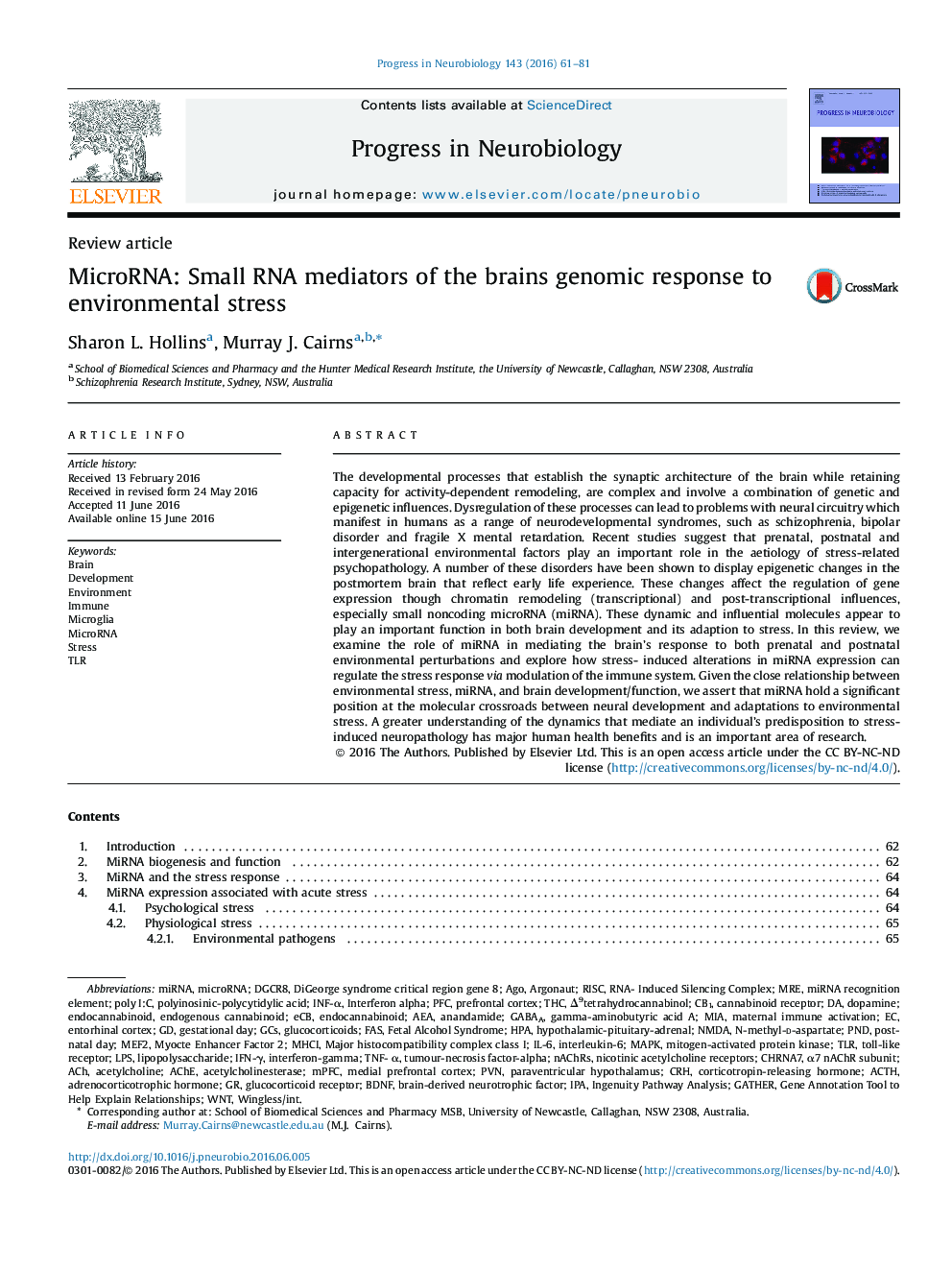| Article ID | Journal | Published Year | Pages | File Type |
|---|---|---|---|---|
| 6286456 | Progress in Neurobiology | 2016 | 21 Pages |
Abstract
The developmental processes that establish the synaptic architecture of the brain while retaining capacity for activity-dependent remodeling, are complex and involve a combination of genetic and epigenetic influences. Dysregulation of these processes can lead to problems with neural circuitry which manifest in humans as a range of neurodevelopmental syndromes, such as schizophrenia, bipolar disorder and fragile X mental retardation. Recent studies suggest that prenatal, postnatal and intergenerational environmental factors play an important role in the aetiology of stress-related psychopathology. A number of these disorders have been shown to display epigenetic changes in the postmortem brain that reflect early life experience. These changes affect the regulation of gene expression though chromatin remodeling (transcriptional) and post-transcriptional influences, especially small noncoding microRNA (miRNA). These dynamic and influential molecules appear to play an important function in both brain development and its adaption to stress. In this review, we examine the role of miRNA in mediating the brain's response to both prenatal and postnatal environmental perturbations and explore how stress- induced alterations in miRNA expression can regulate the stress response via modulation of the immune system. Given the close relationship between environmental stress, miRNA, and brain development/function, we assert that miRNA hold a significant position at the molecular crossroads between neural development and adaptations to environmental stress. A greater understanding of the dynamics that mediate an individual's predisposition to stress-induced neuropathology has major human health benefits and is an important area of research.
Keywords
Related Topics
Life Sciences
Neuroscience
Neuroscience (General)
Authors
Sharon L. Hollins, Murray J. Cairns,
